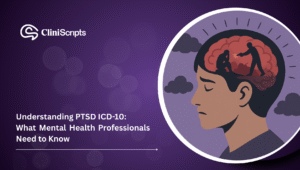Learn how creating a comfort zone in therapy boosts trust, openness, and healing—key steps to more effective therapy sessions.
Medically Reviewed By: Dr Hanif Chatur
Image Credit: Microsoft Designer
Key Takeaways
- Establishing Trust: Choosing the right therapist and setting clear boundaries are essential steps towards building a comfortable therapeutic relationship.
- Personal Comfort Strategies: Incorporating personal touches, like familiar items, and using breathing techniques can greatly enhance comfort during sessions.
- Continuous Growth: Remembering the purpose of therapy and celebrating small victories will bolster positive associations and encourage consistent progress.
Therapy is a deeply personal experience, one that often requires divulging sensitive emotions, past experiences, and current challenges. For many, the thought of baring their soul to a stranger can be daunting, even if that person is a trained professional. Creating a comfort zone within the therapy room is crucial for effective treatment. But how do you find and foster that safe space? Here are some strategies to help.
1. Recognize the Process
Accepting that feeling out of your comfort zone initially is a natural part of the therapy process is crucial. Remember, it’s okay to feel uneasy. Therapy is a journey, and like all journeys, it starts with a single step, often into unfamiliar territory.
2. Choose the Right Therapist
Finding a therapist you can connect with is half the battle. It’s essential to find someone you feel understands and respects you. Research different therapists, read reviews, and maybe even have a preliminary chat before settling on one.
3. Establish Boundaries
Clearly communicate with your therapist about any topics you’re not ready to discuss. While therapy will push your boundaries over time, it should never feel like an invasion.
4. Personalize Your Space
While you can’t redecorate the therapist’s office, you can bring a small personal item, like a comforting blanket or a stress ball. Having something familiar can make the environment feel more welcoming.
5. Be Honest about Your Comfort Level
Openly communicate with your therapist. If you ever feel uncomfortable, speak up. A good therapist will appreciate your feedback and adjust the session accordingly.
6. Take It One Session at a Time
You don’t have to dive into the deep end immediately. It’s okay to take things slow. The more sessions you attend, the more comfortable you’ll feel.
7. Utilize Breathing Techniques
Deep breathing can help calm the nerves. If you start feeling overwhelmed during a session, take a moment to focus on your breath. This can help center your emotions and make you feel more grounded.
8. Remember the Purpose
Therapy is a tool to help you. When you’re feeling out of your comfort zone, remind yourself of why you’re there: to heal, to grow, and to understand yourself better.
9. Practice Self-Care Outside of Sessions
The work doesn’t end when the session is over. Engaging in self-care activities outside of therapy can help you process emotions and make you feel more at ease during future sessions.
10. Celebrate Small Wins
Every time you leave a therapy session, you’ve achieved something, even if it’s just showing up. Celebrate these victories, no matter how small. This can help create positive associations with therapy and encourage you to keep going.
In conclusion, therapy is a transformative process, and finding your comfort zone within it is vital for progress. It’s natural to feel apprehensive, especially at the beginning. Yet, by using these strategies and remembering that you’re in a controlled, safe environment, you’ll be better positioned to unlock the many benefits therapy offers. Remember, it’s a journey of self-discovery and healing, and every journey requires a level of trust—both in the process and in oneself.
MarkiTech.AI is a team of over 50 software engineers, data scientists and clinicians plus other health practitioners who have developed over 40 digital health solutions in the last 10 years such as SenSights.AI, Veyetals.com and CliniScripts.com which focus on helping older adults and their caregivers like family, physicians, nurses etc., age in place, reduce costs and improve revenue opportunities.






